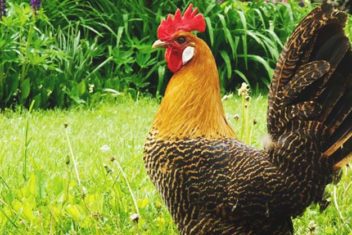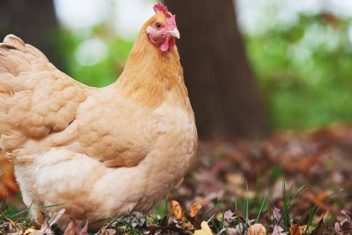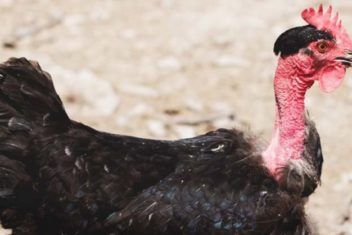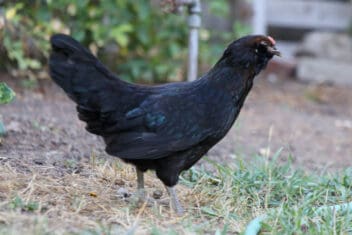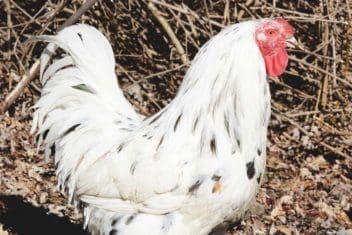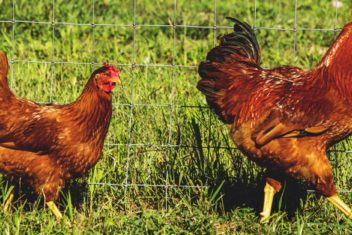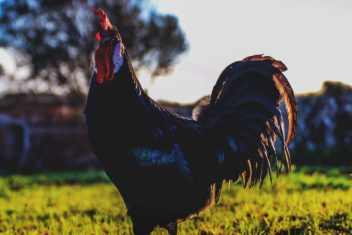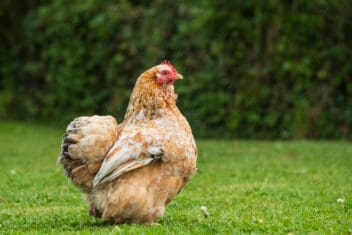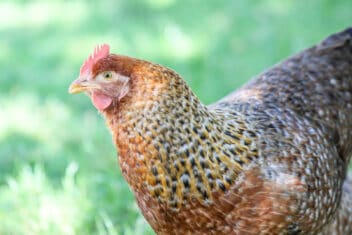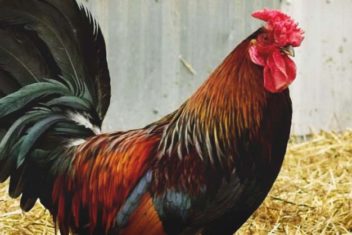This breed of chicken has some valuable uses and an elegant composure that make it an attractive bird for small farm use. Lakenvelder Chickens are also an endangered breed which makes them a very good breed to work with in a breeding program. Due to their petite size, you will not want to use this chicken for meat, but egg production is fairly decent.
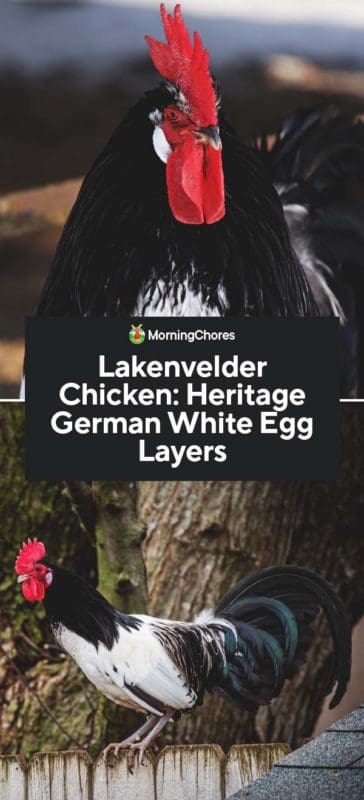
About Lakenvelder Chickens
The Lakenvelder’s origin is somewhat unclear, as it appears they either came from Holland or a part of Germany near Dielingen in Nordrhein-Westfalen. The Lakenvelder name means “white spread over a black field”, which makes perfect sense if you’ve seen the chicken.
There is only one color variation of the gorgeous Lakenvelder, the Silver Lakenvelder. This beautiful chicken was first documented in 1727. Despite its very early documentation, Lakenvelders were not officially accepted into the American Poultry Association until 1939.
Lakenvelder Characteristics
1. Size and Weight
Lakenvelders are certainly dainty little chickens that carry very little bulk and extra meat. These hens rarely weigh more than 4 pounds. Lakenvelder roosters naturally weight a little more than hens, weighing approximately 5 pounds when fully grown.
2. Temperament
The Lakenvelder is a quick, alert and active chicken that rarely wants to sit still for very long. If you’re looking for a pet chicken, this isn’t the breed. However, if you plan on free-ranging your flock, Lakenvelders will be diligent in avoiding predators as they range.
3. Egg Production
While egg production isn’t optimal with Lakenvelders, they eat less food than larger breeds so you will have fewer expenses in keeping up with these birds. Lakenvelder hens lay up to 160 tinted white eggs per year.
4. Meat Production
As you may have gathered based on their size, Lakenvelders aren’t ideal for meat production. Although the breed is noted for having tasty meat, the small amount of meat you will find on the carcass doesn’t really make it worth raising for processing.
Taking Care of Lakenvelder Chickens
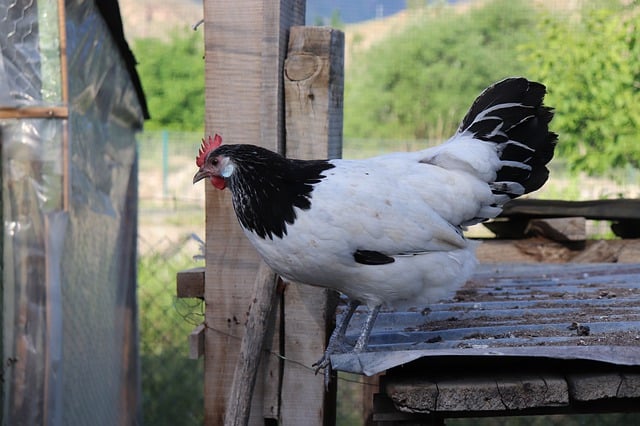
1. Feeding and Nutrition
All young chickens will need a good quality chick starter to start off life on the right foot. Supply your chicks with chick starter until 14-16 weeks of age. When your chickens are entering adulthood, transfer them to a good laying feed. Laying feed will provide calcium and protein for strong and healthy egg production.
If your eggshells are brittle and weak, you may want to consider adding some supplementary calcium to your chicken’s diet. Supplementary calcium can be found in the form of oyster shells. You can also remove the membrane from the inside of your own chicken’s eggs and crush the shells to feed them back to your hens.
2. Housing and Fencing
Since Lakenvelders aren’t huge chickens, they don’t require as much space as, say, a Jersey Giant would. In the coop, it’s still important to provide enough space so that hens stay happy and healthy. Provide your birds 3-4 square feet per chicken in the chicken coop with 12 inches of roost space per bird.
Lakenvelders tolerate confinement well as long as they don’t have cramped quarters. You can provide 10+ square feet per chicken in the run and your birds should be content. Due to their small and agile frames, they can technically fly out of a run, so you may want to have a higher fence.
3. Health Issues and Care
Due to the fact this a breed that has been around for hundreds of years, they have strong immune systems. Any chicken can get ill, but Lakenvelders aren’t specifically susceptible to any diseases. Keeping a close and watchful eye on your birds will go a long way in catching issues before they get out of hand.
Internal and external parasites are a very unfortunate, but common mishap that happens with poultry. Luckily, if caught early enough, parasites are treatable and your flock will be just fine.
4. Breeding
Lakenvelders are an endangered breed, according to the Livestock Conservancy. Due to this fact, the breed is in need of some good stewards to preserve and raise the overall numbers for Lakenvelders.
Lakenvelder Breed Alternatives
1. Barnevelder
Barnevelders and Lakenvelders are speculated to have originated at about the same location, but Barnevelders are a slightly better breed for meat production. Egg production is slightly higher from Barnevelders, but they do consume more feed.
2. Leghorn
Leghorns are also a small breed, but their egg production far exceeds that of the Lakenvelder. Leghorns share similar personalities and sizes with Lakenvelders, but they are not quite as classy and timeless as the heritage Lakenvelders.
Did You Know?
Although this breed has been around for thousands of years, it only came to America in 1900. Lakenvelders were in America for 39 years before finally getting accepted into the American Poultry Association in 1939.
For the poultry fancier looking into a fun breeding project or an attractive bird to free-range their yard, Lakenvelders are an excellent choice.

